Cichlid zebra: species with description and content
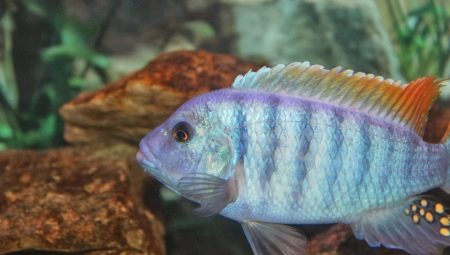
Fish with an exotic appearance are in special demand among aquarists, both beginners and experienced. One of these is the zebra cichlid. The variety of subspecies of these individuals is amazing. However, each of them must be kept in special conditions, which will be discussed below.
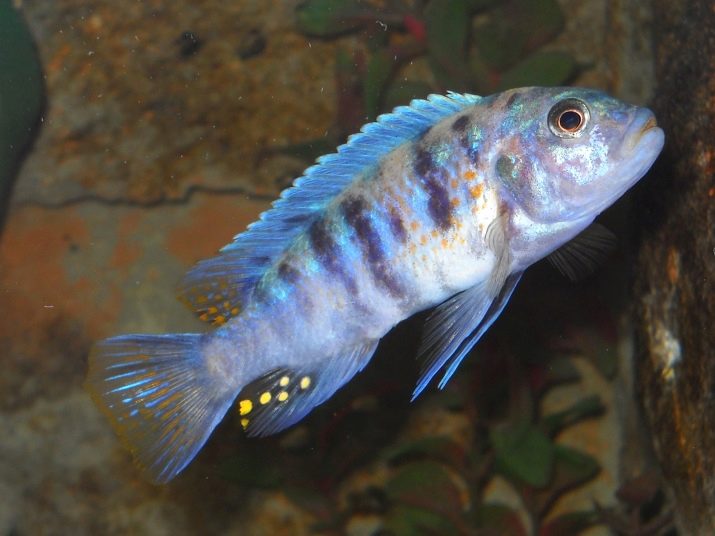
Varieties and their description
Striped
Behavior
Despite its rather modest size, this does not stop the cichlazoma from attacking other fish.
She has strong immunity and divorces easily.
Keep the cichlid in spacious aquariums, she must have her own corner, which no one will encroach on. The black-striped fish has a pugnacious character, and it is difficult to get along with other fish.
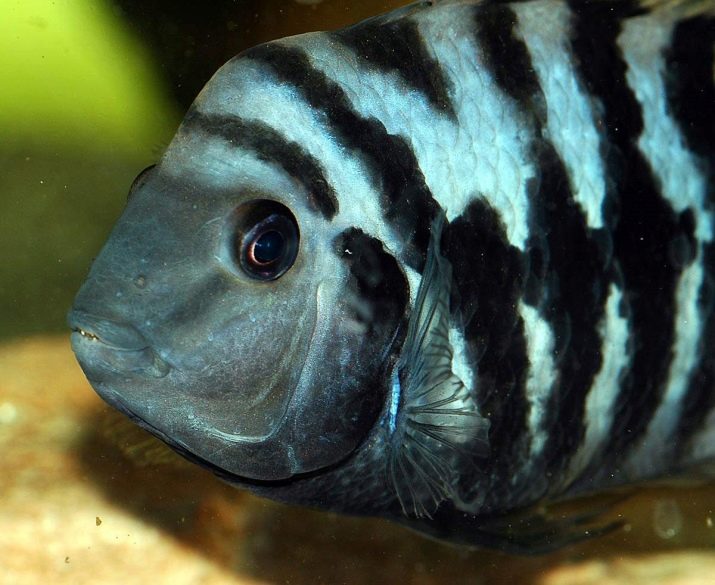
Appearance
The body of the Malawian cichlazoma (another name) is oval, the fins are pointed, in length it does not exceed 15 cm.
The color is smoky gray-blue, on the body of the cichlid there are black stripes. The fins are slightly transparent, the fish have large eyes and expressive lips. During the hybridization process, unusual colors appeared, such as albinos.
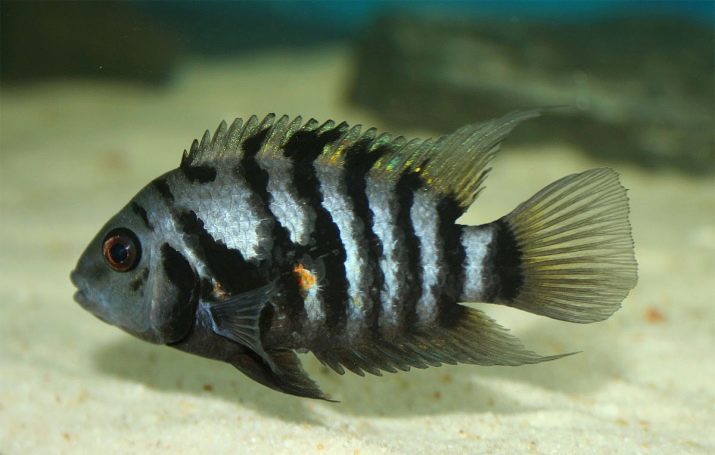
Sex differences
The male is larger in size, so it is not so difficult to distinguish him from the female. His forehead is less colored, but enlarged. The female has an orange tint on her belly, which the male does not.
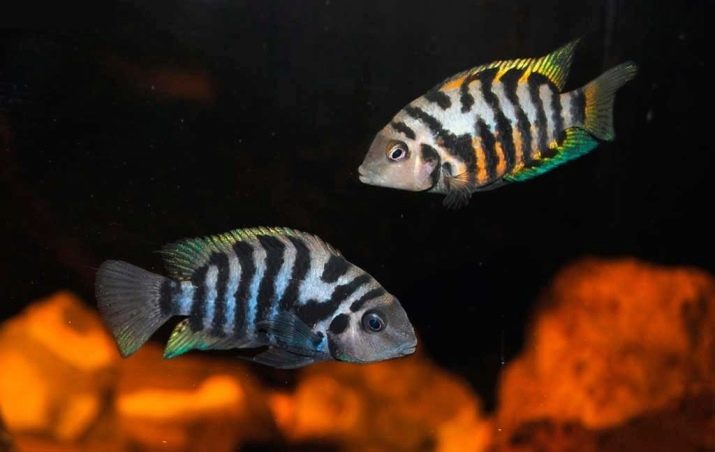
Red
Behavior
Such a cichlid is unfriendly but quickly remembers its owners, swimming up to them and greeting them. The red zebra loves to hide, so she needs to secure the caves in the aquarium.
She even has this kind of fun: the zebra swims and then swims out of its hiding place.
Reproduces unproblematic. A large aquarium is required for maintenance.
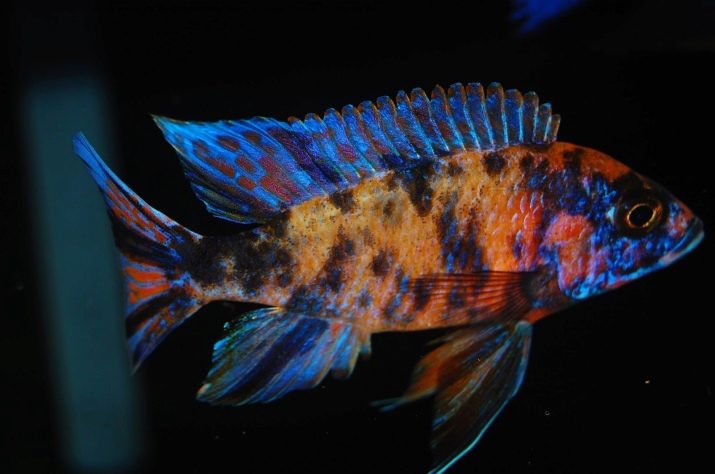
Appearance
Such aquarium fish fascinate with their beauty.The body is elongated, flattened on the sides, the fin is long, the length of the fish is 8 cm. The cichlid has a rather voluminous forehead and lips. In case of disguise, it can change color to gray, as a result of which there is almost no way to find it in the thickets.
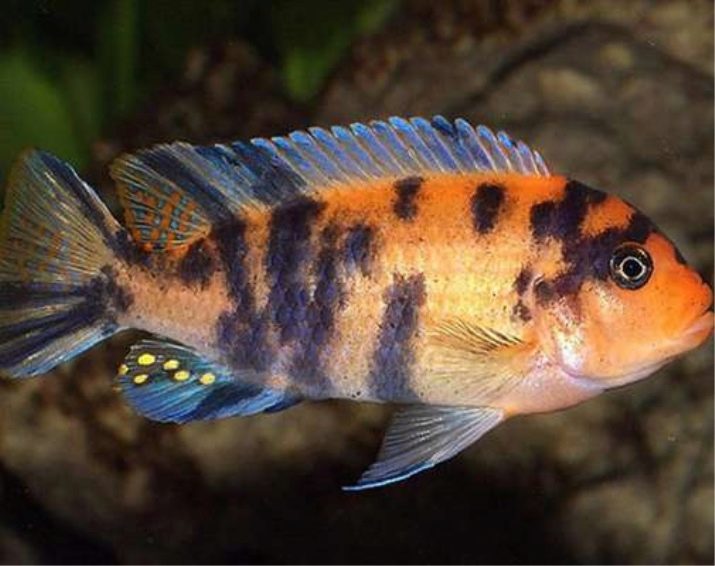
Sex differences
It is very easy to distinguish a female from a male, because their colors are very different: females are more yellow, and in males, blue predominates in appearance. You might even think that these are two different fish. Males also have subtle vertical stripes and up to 7 round dots near the anal fin.
For reference: pseudotrophyus includes many colors, there are more than 50 of them: blue, white, gold, blue-black, yellow-orange, red, etc.
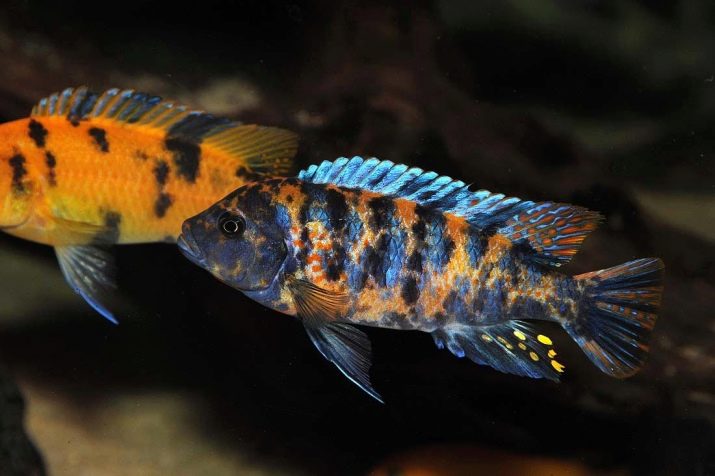
Blue
Behavior
The cobalt zebra prefers to hide, so it needs a large aquarium. It is advisable to create a rocky landscape that will include shelters, grottoes and caves. The male has one peculiarity: when he is very afraid of something, he changes his color, which is why it is easy to confuse him with a female.
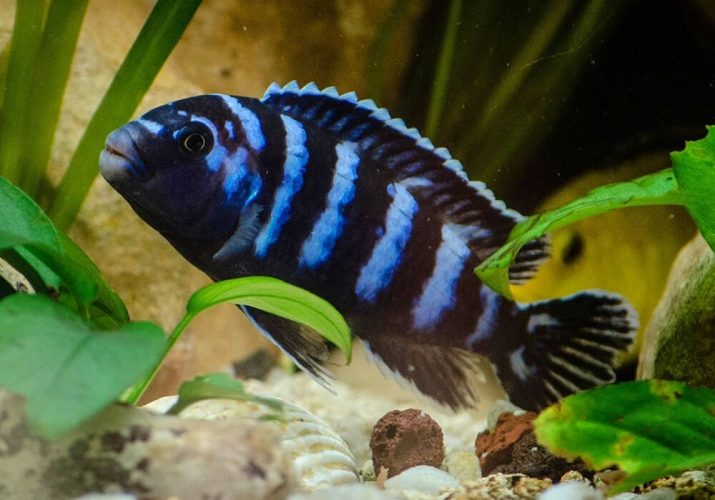
Appearance
Male reaches 10 cm, female - 8. Males are pale blue shiny color, females are blue, without shine.
Some "girls" have white scales, which is why they are regularly caught for export.
The pure white color is also found in males, which is the equivalent of the usual "gummy color".
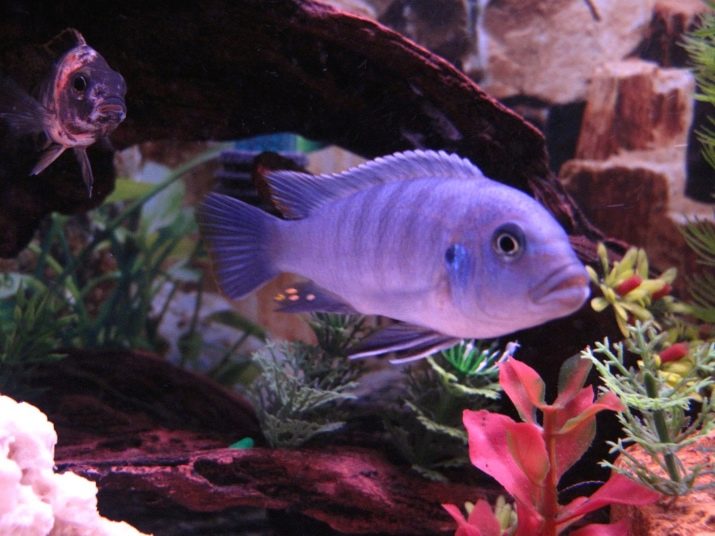
Sex differences
It is not difficult to distinguish the female - just look at her carefully: she does not have the shine that is inherent in the male. The representative of white has a spotted color.
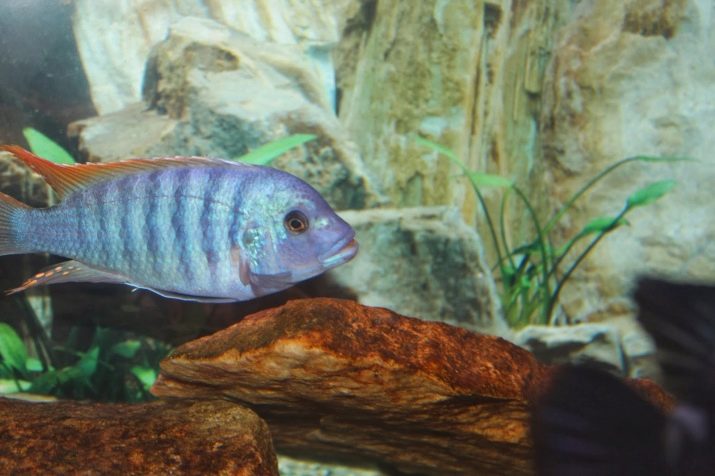
Maintenance and care
Striped
Zebras breed easily. It is unacceptable to keep them with other miniature fish and large carnivores, which include: cockerels, neons, piranhas, scalars, swordtails, etc. It is advisable to keep them with ancistrus, apistograms, corridors, as well as with cichlids of the same biotype: calm and small.
For a quality life in an aquarium, you need to equip it with everything you need. For a group of black stripes, at least 300 liters of water will be required, acidity - 6-8, temperature - 24-28 degrees, hardness - 2-20 dGh. The water should be clean, the current should be weak. Plants are also needed, the grass should be lined with stones on the sides, otherwise the fish will dig it up.
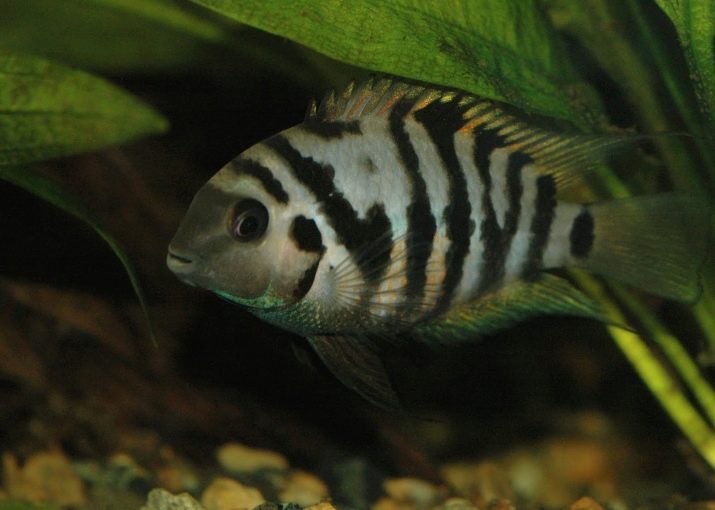
Plants such as Cryptocoryne, Vallisneria, Echinodorus, Anubias, etc. are suitable. As decorations and comfortable living, fish need to install large stones, grottoes and caves.
The sun's rays should not fall on the aquarium, but if there are shelters, then the cichlazome will be comfortable.
Feeding should be balanced and portioned, as blacks tend to overeat. Cabbage and lettuce leaves must be included in the menu, as well as zucchini, mussels, minced meat, shrimp, etc.
This is important to know! For any type of fish, equipment is required: an external filter for water purification, an aerator-heater, which is needed in winter, a thermometer to maintain an optimal temperature.
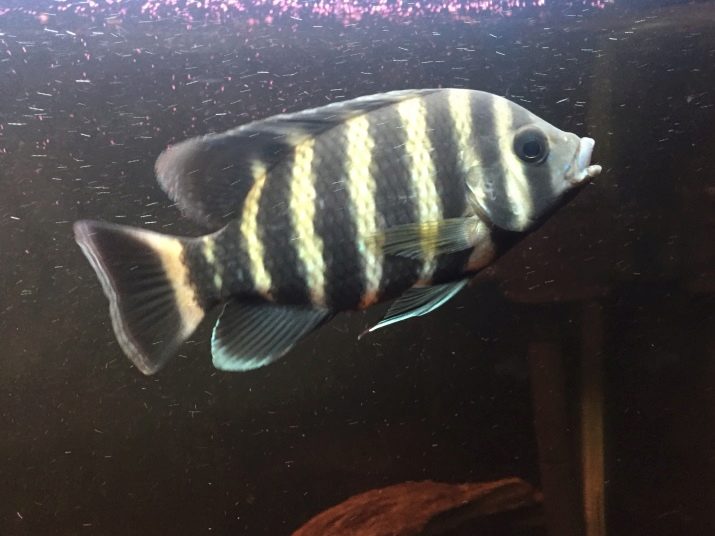
Red
The red zebra is a rather unpretentious fish in keeping, it adapts to any food and does not create problems. The best pair for a red zebra is 3 females and 1 male. Mbuns get along well with other phlegmatic cichlids, but only of a different color. As soon as she sees a fish of the same shade as hers, she starts a fight.
The aquarium should be at least 122 cm in length and the volume of water should be 250 liters. But if more tenants are planned, then the aquarium should be large. It is necessary to take care of filtration, placing sand, coral, stones, snags, gravel in the aquarium. A third of the water needs to be changed weekly and refreshed more often.

Water must be maintained with the following indicators: hardness - 6-10 dH, temperature - 23-28 degrees, pH - 7.7-8.6. Bloating is common in the red zebra, but if you alternate between plant and animal foods, the problem can be avoided.It is important to ensure that the fish receive vitamin supplements, eat often, but in portions. Algae should be placed in the aquarium: this will help save on food.
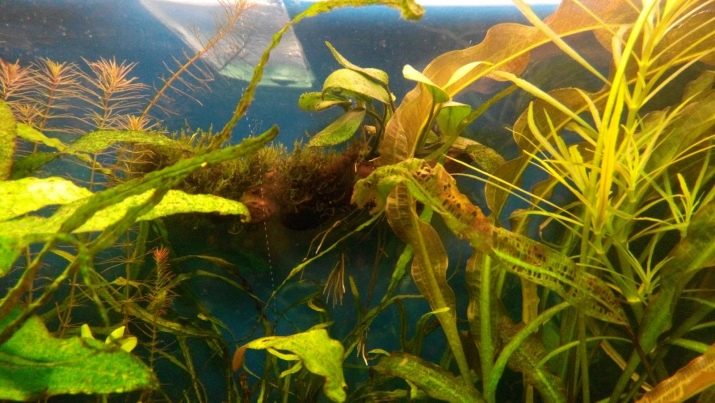
Blue
The required volume of the aquarium is at least 150 liters for several fish. One male requires at least 2 females. Cobalt blue reproduces very interestingly: after spawning, the female collects eggs in her mouth and incubates them there for 3 weeks. All this time, the female does not feed.
The blue zebra is compatible with chain catfish, lake cichlids. Malawi, Victoria, as well as with some types of cichlids of the lake. Tanganyika. They cannot be kept with peaceful fish species, but can be combined with other Mbuna. The aquarium should contain stones, caves, sandy substrate.
Water hardness - 8-25 dGH, temperature - 24-28 degrees, pH - 7.6-8.8. Basically, these fish are vegetarians, so plant foods should be included in their menu.
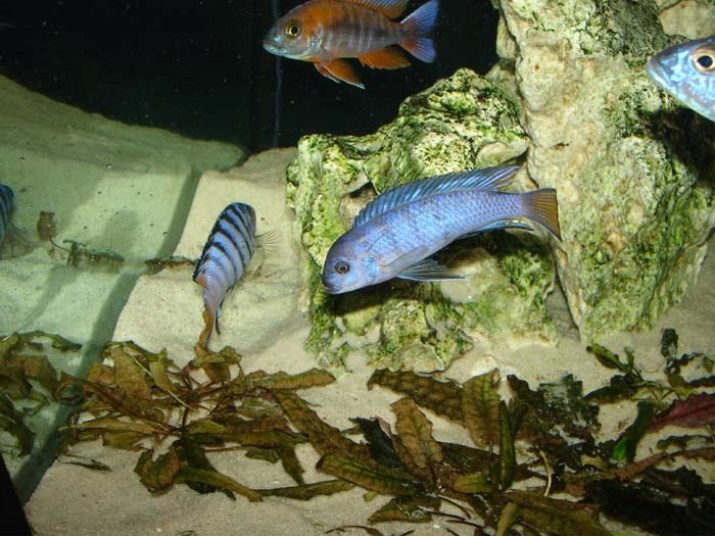
The male can show aggression towards females, so the best option is to keep 1 male and several females. The water in the aquarium must be clean and oxygenated.
Cichlids have more than 2000 species, basically all of these fish are predatory, demanding and territorial. They take care of their offspring with great responsibility, so they need good conditions for reproduction. The inhabitants of the aquatic world need clean water, proper balanced nutrition and caves in which they can hide. Then the fish will delight you with their beauty and give you positive emotions.
For how the zebra cichlid cares for the fry, see below.








